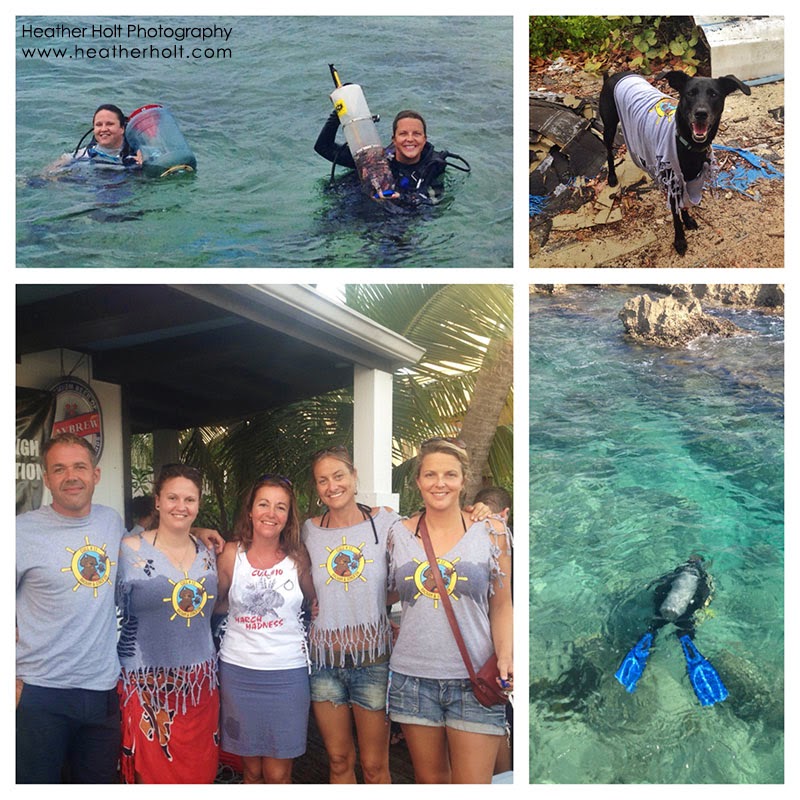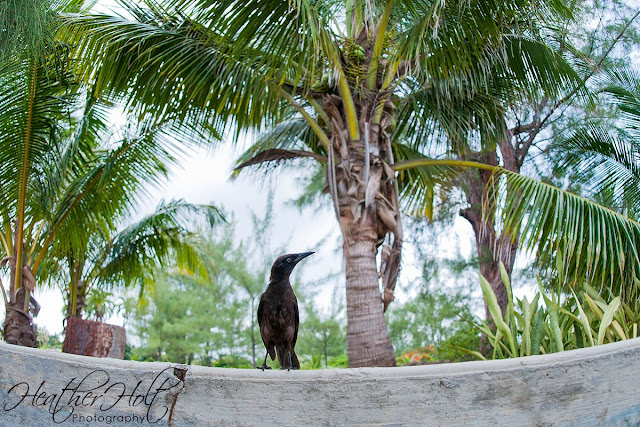As visitors to Grand Cayman you might have heard some of the buzz about the lionfish. Well here is the low down.
Lionfish, which are native to the Indo-Pacific waters, first appeared in the Caribbean in the early to mid 1990's. It was thought that they were introduced when an aquarium in Florida was destroyed by Hurricane Andrew, or perhaps by aquarium enthusiasts who were dissatisfied with the fish and let them free in the sea. The exact reason is unknown.
 Although they are beautiful fish, and have a place in nature, their invasion into the Atlantic/Caribbean waters is potentially devastating.
Although they are beautiful fish, and have a place in nature, their invasion into the Atlantic/Caribbean waters is potentially devastating.
Thanks to idive, here are some facts on Lionfish:
1) Voracious predators shown to eat native fish and crustaceans in large quantities, including both ecologically and economically important species like grunts, snapper, Nassau grouper, and cleaner shrimp
2) No known native predators
3) Equipped with venomous dorsal, ventral and anal spines, which deter predators and can cause painful wounds to humans
4) Capable of reproducing year-round with unique reproduction mechanisms not commonly found in native fishes (females can reproduce every 4 days!)
5) Relatively resistant to parasites, giving them another advantage over native species
6) Rapid in their growth, able to outgrow native species with whom they compete for food and space
Below are stomach contents of several fish, and within were several species of native reef fish.
The lionfish were first spotted in Cayman waters in 2008, and since then the Cayman Islands Department of Environment have seen these pests as a genuine threat to the beautiful reefs and have been actively trying to control the populations.
They have issued spear gun licenses to people for use while free diving or scuba diving, ONLY to be used to kill the lionfish. In order to get the license one must get a valid police clearance, and the licensee must go through a course warning against the hazards of lionfish culling.
The lionfish have venomous spines on their body and if they puncture the skin it can be very painful and it is advised to seek medical attention. However once these spines have been cut off the body and meat of the lionfish is completely safe and delicious to eat.
For more information please see the DoE's Lionfish Brochure.
For us avid divers and lionfish hunters, culling these pests is not only a great social activity to participate in, the end result is free, fresh fish for dinner!
Step 1: Arm yourself with your legal and licensed spear from the DoE, a proper container to hold the lionfish, and a cooler of ice.
Step 2: Spot the lionfish. The fish typically hang out in overhangs or caves, but can be spotted hanging out on the reef like any old fish. They can be found not only on the deep wall, but also in the shallower reefs. These guys know no boundries!
Step 3: Pull your spear taught and approach the fish slowly, they generally are pretty blase to divers and you can get quite close. This is helpful in aiming! Once you have your target, let the spear fly! Once you get the fish on the spear put him in the bucket asap. Sometimes they wriggle off the spear and sometimes the cheeky mutton snappers or groupers will pick them right off your spear before your eyes!
Please note it is illegal to spear the fish and leave them or feed them to the fish lurking over your shoulder. Nassau Groupers (above) and Mutton Snappers (below) are notorious for trying to scam... or steal a free meal.
As seen from the facts above, lionfish reproduce rapidly and you can spot fish that range from teensy tiny (above), to huge delicious swimming filets (below).

Step 4: Once you come up from your dive get these guys on ice immediately. This will help the fish die quickly and keep them fresh. Once you get them to a place to process them you begin with cutting off the spines and putting them somewhere safe. I usually put them in a pot and dump them back to the sea in an area where there is no chance anyone will ever come into contact with a stray spine.
Step 5: Once the spines are safely removed and dealt with, it is time to get off that tasty piece of meat. Just slice it right off like you would any other fish from the head down to the tail, remove any stray bones and skin and you are ready to begin cooking a tasty meal, or freeze them for later consumption.


Above we had a great cull and battered and fried the filets. Can't go wrong with that! Below we stuffed the filets with lime, onion, and curry sauce, then baked them and added fresh cilantro on top and served with rice. I have also been very successful slapping the marinated filets on the BBQ, making fish cakes, using the super fresh filets in ceviche, and the list goes on and on.
This is where the good news comes in for visitors to Silver Sands, many of the restaurants on the island now serve lionfish as a regular fish special on the menu. You can head over to Michaels Genuine in Camana Bay to give it a try.
As mentioned above the Cayman Islands is very pro active in promoting culling of these tasty pests. There are tournaments that are put together by the Cayman United Lionfish League and DoE, and offer money prizes for the most weight, smallest fish, biggest fish etc. It is a great community activity to participate in and all the fish are given to charity.
Since these tournaments have started we have been seeing less fish and overall less weight, which leads us to believe that for once human intervention is helping.
There have been a few interesting things that we have seen from these tournaments. For example this little stingray that was in the gullet of this monster lionfish. Poor little guy...
All in all the active culling of these invasive species is helping to control the population, and hopefully in the future we can look forward to the native predators (grouper, eels etc...) starting to eat them instead. But in the mean time all us cullers out there will enjoy the hunt and the delicious meal provided by these beautiful pests.


















































